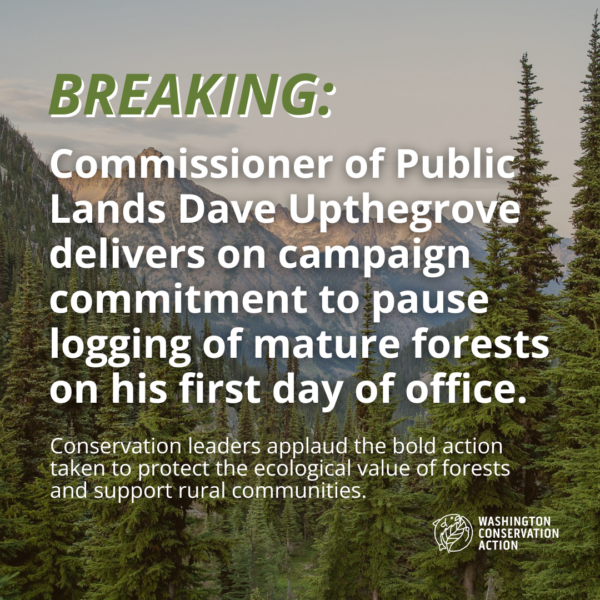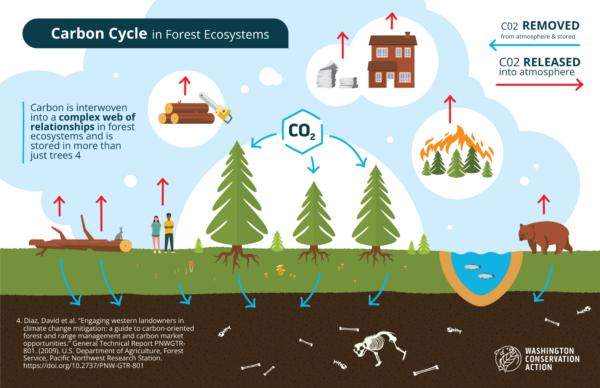There are some important questions that forest managers are asking: Should we harvest managed forests on short rotations (cutting every 30-35 years) or longer rotations (80-100 years)? Should we increase wood product production because wood takes less fossil fuel energy to produce than aluminum, steel, and concrete? Should old growth be converted to fast growing plantations to sequester more carbon? Should we thin forests more to decrease the potential for fire in Eastern Washington forests because fire produces a lot of carbon emissions?
Several research studies have been published over the past few years that look at these issues for our forests in the Pacific Northwest. Here are the key findings:
- Longer growing rotations store much more carbon. For forests in western Washington and Oregon, harvesting landscapes on longer rotations stores more carbon (in the forest ecosystem and in wood products) than short rotations. A 100-year rotation produces between 2 and 2.5 times as much total carbon storage in wood products and the forest as a 30-year rotation.
- Shorter growing rotations increase net emissions. Decreasing rotation length (e.g. from 80 years to 50 years) increases net emissions, for many decades to a few hundred years.
- Logging old growth forests means more carbon emissions for centuries. Logging western Washington and Oregon old growth leads to an increase in carbon emissions for hundreds of years (even after carbon storage in wood products is taken into account).
- Clear cutting and thinning release more CO2 into the atmosphere. Increasing the amount of harvest (more clear-cutting and more thinning) leads to a net increase in CO2 emissions even after doing a life-cycle analysis of substituting wood building products for steel and aluminum and substituting biomass energy for fossil fuel energy.
- Thinning to reduce forest fire intensity in eastside dry forest types does not decrease overall carbon emissions from fires. While thinning forests to reduce fire frequency or intensity may be important for improving wildlife habitat or protecting urban areas from fires, it can’t be justified from a carbon emissions perspective.
Gradually increasing rotation lengths on our managed forest, conserving existing mature forests, and not cutting old growth are key strategies for using forests to fight climate change. WEC is working on programs to incentivize these climate-beneficial forestry methods, including through our Growing Our Future campaign.



